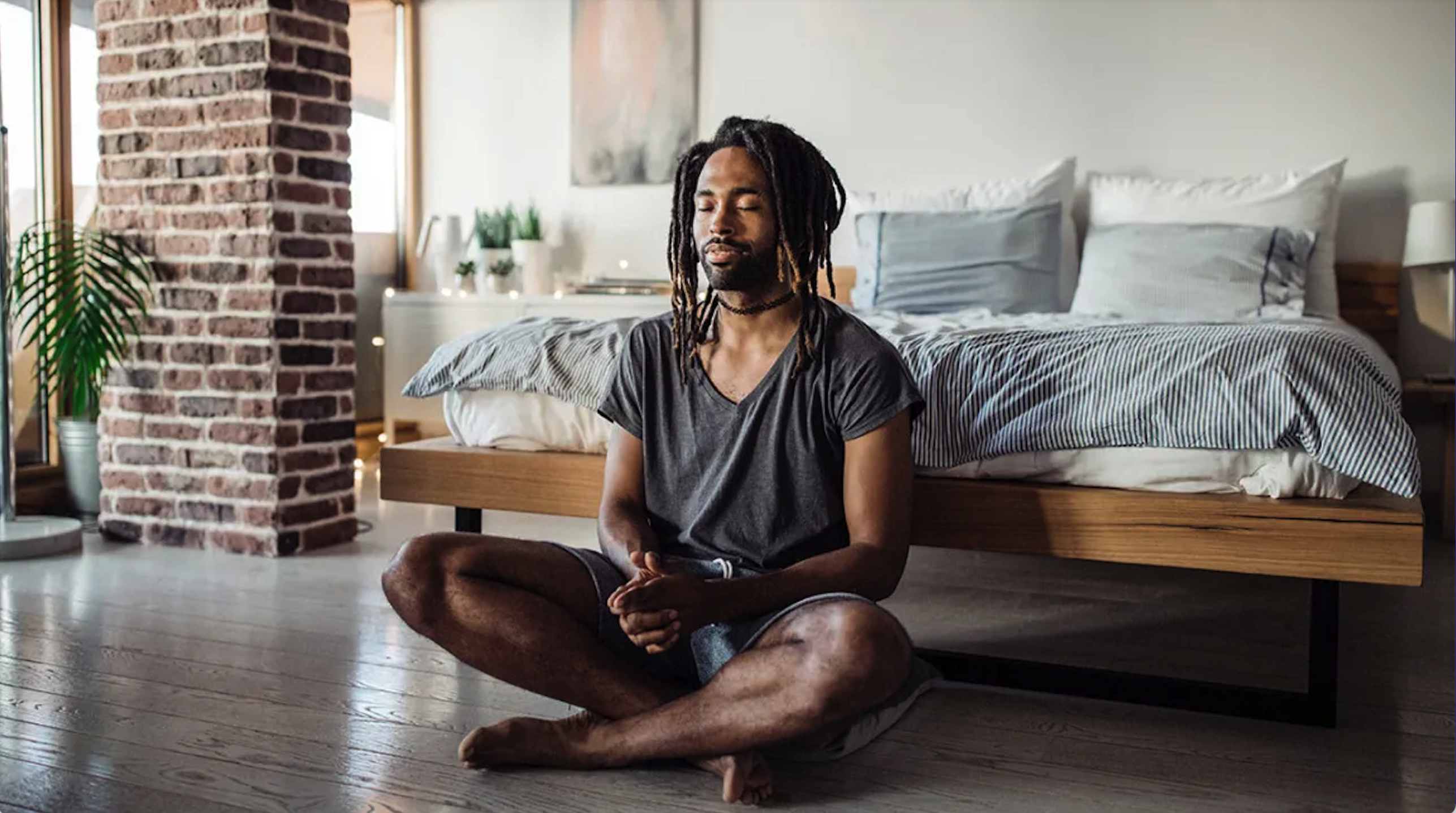Ujjayi breathing – also known as Ocean Breath Pranayama, is a slow, deep inhalation and exhalation in and out through the nose. The air passes the small respiratory tract of the throat called the glottis. It is breathwork very much focused on the diaphragm that aims to fill up the belly with air and slowly release it back out to the world while at the same time connecting your mind and body. The result is a long, deep, repetitive, and rhythmic sound that replicates the waves crashing along the coast of the sea. This is a breathing technique used during yoga as well as meditation. You can practice Ujjayi laying down, sitting up, or standing. It is widespread to ask the yoga instructor to start this method during ashtanga or vinyasa classes. The Sanskrit meaning of the breathing technique translates to victorious, warrior, or ocean breath.
What is ujjayi breath?
Breathwork, in general, is said to help free your mind from the bondage of thoughts, and the same goes for this technique. Ujjayi pronunciation is – oo – ja – ee. The Sanskrit terms are:
- Ujjayi: Victory over
- Pranayama: Prana – life force, breath; Yama – control, restraint, regulation
We gain victory or control over our mind that can go wild with overthinking – often too focused on a topic or not focused enough. It is not surprising that with so many distractions and possible directions in today’s world, it is vital to have a clear and balanced mind to make the right choices. Breathing to stay calm is a practiced technique in many different areas. Anyone who works in an emergency-related field goes through breathwork training to keep control of one’s emotions and behaviors. This method helps the individual make clear and correct decisions without being overwhelmed by other impacting factors. The straightforward technique of breathing in and out while counting to ten helps avoid panic and indecisiveness in a time where quick decision-making and going with your intuition is needed.
How to do ujjayi breathing
Ujjayi breath is an elemental, audible breath. An internal sound that we can use to anchor our busy minds. It is a beautiful breath because it is calming and energizing all at once. So when you are ready, hop on your mat and follow these guidelines:
To begin with, we are going to get into a comfortable position or seat of your choice. This can be a chair against the wall or come into the Sukhasana pose – also known as the easy pose. The Sukhasana pose is the name for a seated position, usually cross-legged and back upright, that you find comfortable and can stay in for an extended period. It is one of the most basic poses used in yoga and meditation. In this context, the word “easy” does not mean that it is an easy pose to achieve. It is quite the opposite. For some people, holding a cross-legged seated posture for more than five minutes is a challenge. Easy means instead – with ease. A well-aligned Sukhasana creates the conditions for a relaxed yet alert state in both the body and mind. The first alignment challenge of this pose is to sit with the legs relaxed while lifting the spine and opening the chest.
Begin looping the shoulders forward, up, and back and find that lift in your heart. Just notice the natural breath here, the natural ebb and flow. Close your eyes if you prefer. Bring your attention to the natural breath then we’ll begin to deepen the breath by taking a nice, sweet inhale through the nose and exhaling back through the nose.
Ujjayi Breathing Technique
When doing the Ujjayi breath, you inhale and exhale with your lips sealed. If you prefer, you can start with an inhale through the nose and exhale through the mouth, with your hand over your mouth as you exhale. This technique is an excellent way to phase into Ujjayi if you are a beginner. The main goal is to practice the breath without letting any air out through the lips. The lips are gently closed, and you will notice that the main action of the breath is happening in the throat. By inhaling and exhaling through the nose, you create a constriction in your throat. Imagine your breath going in and out of a straw-like funnel and note how your throat feels. It is also important that while your mouth is closed, you are aware of the possible tension in your jaw and your teeth – and perhaps your neck. If you feel this tension, simply let it go and loosen up your muscles.
zWith practice, you will notice that both the inhale and the exhale will sound the same. Along with the even flow of the breath, the length is also essential. Five seconds on the inhale and five on the exhale is the perfect method. Some people even use a metronome to make sure that they keep the length of the breath equal. One can also add a metronome. It acts as an anchor as you focus on your breathing and keeping the mind free.
Ujjayi Breath Benefits
The notion that breathing brings health benefits has ancient foundations. Luckily, science has also backed up this view with research. Forbes released an article on the impact breathing has in calming your brain, among other things. Scientists discovered that a part of the brain connected to our breath has a circuit that can affect our emotional states. It has also been proven that breathing can help regulate blood pressure. Research suggests that slowing down the pace of your breath increases “baroreflex sensitivity” – the function that regulates blood pressure via the heart rate. Counting breaths also show activity in the brain’s emotional region, with emotions, memory, and awareness showing a solid and focused pattern compared to the scattered state when not focused on the breath. In addition to the scientific data, it is said that Ujjayi breathing:
- Lengthens your breath
- Strengthens your lungs and diaphragm
- Begins to warm your body
- It gives you something to focus on
- Can help you practice yoga in a safe manner
- Can bring you into the present moment
- It helps to create stability in the body, which is why people say it can “tone and tighten”
- Stimulates your vagus nerve and can calm anxiety
Ujjayi Breath Meditation
Ujjayi pranama breathing is mainly a yoga technique that helps you stay focused on the practice as you move into different poses. On the other hand, meditation is about letting go to the point where you are unaware of the breath yet controlled. Practicing Ujjayi breathing can lead to a meditative state and can help you practice mindfulness, but not really considered a technique for meditation. Many yogis combine Ujjayi breathing and meditation with a particular focus on releasing anxiety. The start of yoga practice can begin or end with a meditation. The Ujjayi breathing method is a popular go-to technique seeing as it is used during the rest of the practice to get into different yoga positions.
Ujjayi For Advanced Sequences
When you start with yoga, ujjayi breathing can be challenging as you do not know the sequence of poses well enough. More attention goes into getting into the pose rather than the breathwork. But all that changes the more advanced you get. With practice, the sequence of the postures gets ingrained in your memory. The breathing also develops, but at this stage, you can make sure that you breathe as you get into the pose rather than breathing after. Breathwork also makes getting into the postures more intuitive. You gain extra balance and feel what your body needs to do when the movement and the breath are in sync.







